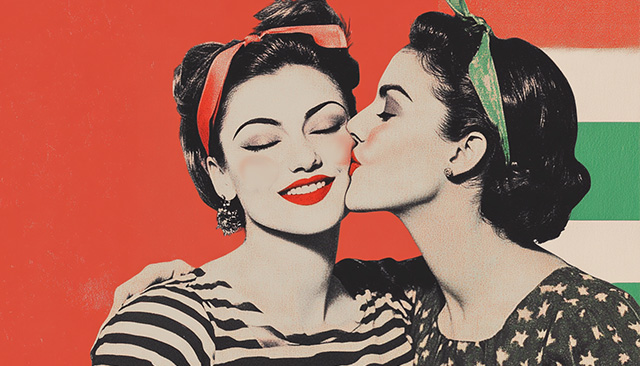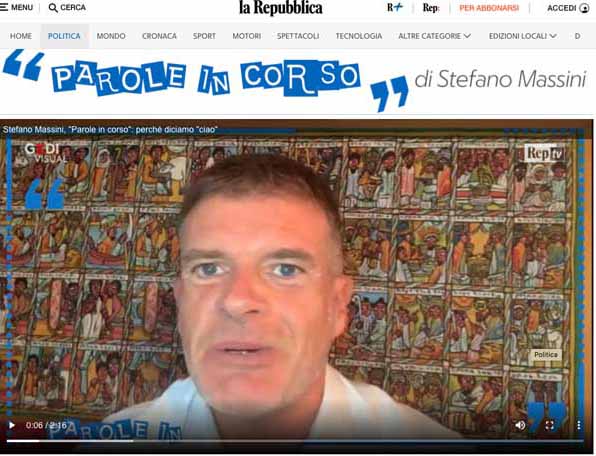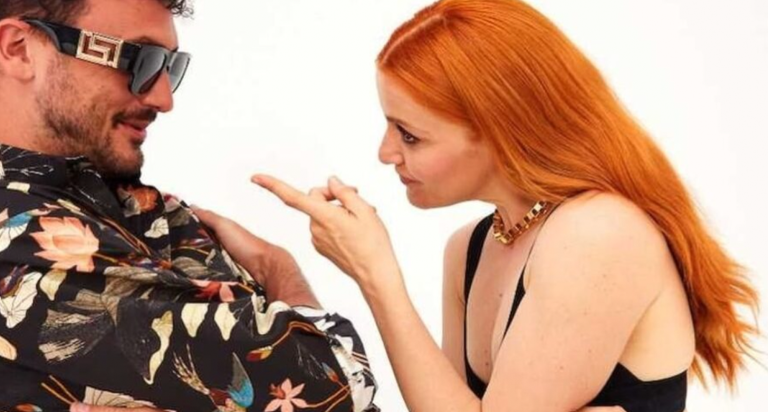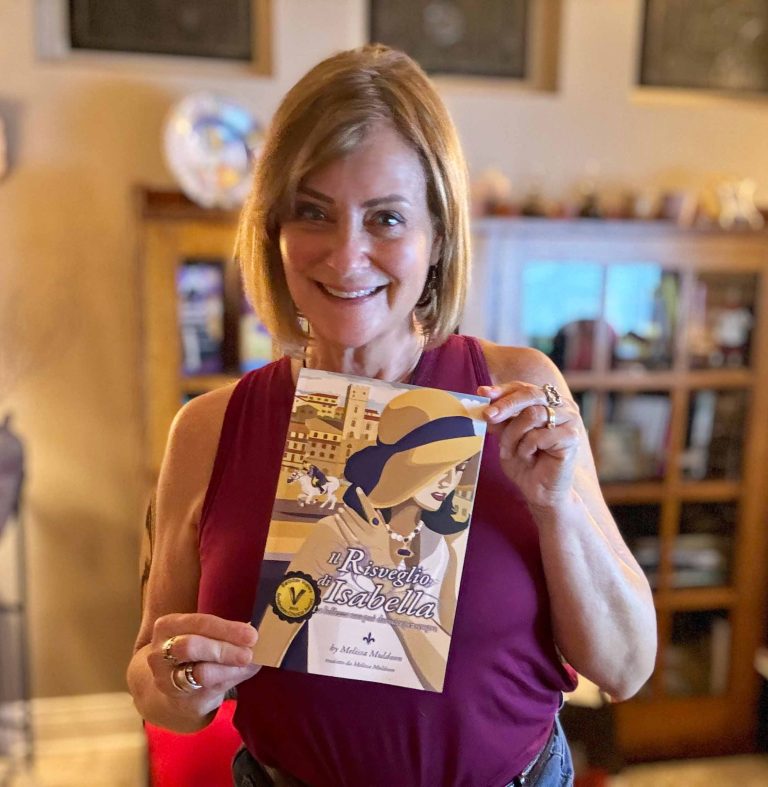
Ciao Bella! Le Origini Sorprendenti della Parola “Ciao”
Surprising Origins of Italy’s Iconic Greeting
Dalle Radici Antiche ai Saluti Moderni
From Ancient Roots to Modern Greetings
Che tu stia arrivando o partendo, atterrando o decollando, imbarcandoti o sbarcando, non puoi sfuggire alla parola “Ciao!” È ovunque: da Roma fino alla Thailandia!
Whether you’re coming or going, flying in or flying out, embarking or disembarking, you can’t escape the word “Ciao!” It’s everywhere—from Rome to Thailand!

Un Saluto Iconico e Inconfondibile
An Iconic and Unmistakable Greeting
“Ciao! Come stai? Bene, grazie! A dopo!” Basta pronunciare “Ciao” per evocare immagini di Marcello Mastroianni con un abito Armani e occhiali da sole Prada, o Anita che danza in una fontana di Bernini. Due semplici sillabe che portano alla mente bar all’angolo, tazze di caffè tintinnanti, l’odore di un espresso appena fatto e cornetti caldi.
“Ciao! How are you? Fine, thanks! See you later!” Simply hearing “Ciao” conjures up visions of Marcello Mastroianni in an Armani suit with Prada sunglasses, or Anita dancing in a Bernini fountain. Two syllables evoke corner bars, clinking coffee cups, the scent of freshly brewed espresso, and warm pastries.
Un Saluto per Ogni Occasione
A Greeting for Every Occasion
“Ciao” è un saluto informale, perfetto per qualsiasi situazione. Può essere usato con il “tu” per amici, cani o persino nonne novantenni, ma anche con il “lei” in contesti formali, come per salutare il presidente della Repubblica.
“Ciao” is an informal greeting, perfect for any occasion. It works with “tu” for friends, dogs, or even ninety-year-old grandmothers, and with “lei” in formal contexts, like meeting the president of the Republic.

Le Origini Veneziane di “Ciao”
The Venetian Origins of “Ciao”
In origine, “Ciao” deriva dal dialetto veneziano “s-ciào,” che significa “sono il tuo schiavo.” Con il tempo, perse la connotazione servile, diventando un’espressione di fratellanza e buona volontà.
Originally, “Ciao” comes from the Venetian dialect “s-ciào,” meaning “I am your slave.” Over time, it shed its servile connotation, becoming a term of goodwill and camaraderie.
Dopo aver percorso la penisola italiana, “Ciao” ha raggiunto l’Europa, le Americhe e persino l’Australia, portato dagli emigranti italiani. A Cuba, è diventato così popolare da sostituire “Adiós” come saluto principale.
After traveling through Italy, “Ciao” reached Europe, the Americas, and even Australia, carried by Italian emigrants. In Cuba, it became so popular that it replaced “Adiós” as the primary greeting.
Ciao, Hemingway e l’America
Ciao, Hemingway, and America
La parola si è diffusa anche grazie al romanzo di Ernest Hemingway “Addio alle armi” (1929), ambientato in Italia durante la Prima Guerra Mondiale, che rese “Ciao” familiare agli anglofoni.
The word spread further thanks to Ernest Hemingway’s 1929 novel “A Farewell to Arms,” set in Italy during World War I, which made “Ciao” familiar to English speakers.

La Versatilità di “Ciao”
The Versatility of “Ciao”
“Ciao” è simile all’hawaiano “Aloha,” usato sia per dire “Ciao” che “Arrivederci.” Può essere amichevole—“Ciaaaao, che bello rivederti!”—o civettuolo—“Ciao bella, ti va di uscire stasera?”
“Ciao” is similar to the Hawaiian “Aloha,” meaning both “Hello” and “Goodbye.” It can be friendly—“Ciaaaao, so good to see you!”—or flirtatious—“Ciao bella, want to go out tonight?”
Ripetere “Ciao” più volte aggiunge urgenza al saluto: “Ciao ciao ciao ciao” equivale a “Devo andare, ho fretta!”
Repeating “Ciao” adds urgency to the farewell: “Ciao ciao ciao ciao” translates to “Gotta go, I’m in a hurry!”











